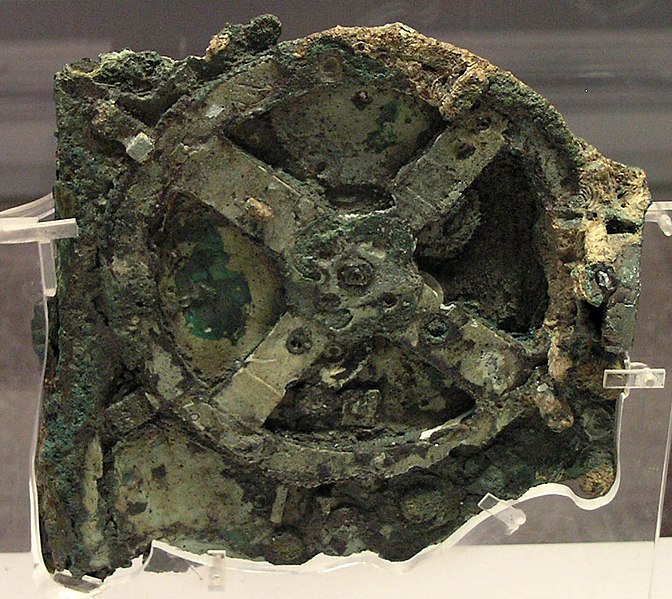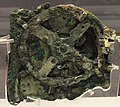Fájl:NAMA Machine d'Anticythère 1.jpg

Az előnézet mérete: 672 × 599 képpont További felbontások: 269 × 240 képpont | 538 × 480 képpont | 861 × 768 képpont | 1 036 × 924 képpont.
Eredeti fájl (1 036 × 924 képpont, fájlméret: 207 KB, MIME-típus: image/jpeg)
Fájltörténet
Kattints egy időpontra, hogy a fájl akkori állapotát láthasd.
| Dátum/idő | Bélyegkép | Felbontás | Feltöltő | Megjegyzés | |
|---|---|---|---|---|---|
| aktuális | 2005. december 20., 12:48 |  | 1 036 × 924 (207 KB) | Marsyas | Fragment principal de la machine d'Anticythère. Le mécanisme consiste en un système complexe de 32 roues et plaques portant des inscriptions relatives aux signes du zodiac et aux mois. L'étude des fragments suggère qu'il s'agissait d'une sorte d'astr |
Fájlhasználat
Az alábbi lapok használják ezt a fájlt:
Globális fájlhasználat
A következő wikik használják ezt a fájlt:
- Használata itt: ab.wikipedia.org
- Használata itt: af.wikipedia.org
- Használata itt: als.wikipedia.org
- Használata itt: ang.wikipedia.org
- Használata itt: anp.wikipedia.org
- Használata itt: an.wikipedia.org
- Használata itt: ar.wikipedia.org
- Használata itt: ast.wikipedia.org
- Használata itt: azb.wikipedia.org
- Használata itt: az.wikipedia.org
- Használata itt: bcl.wikipedia.org
- Használata itt: be-tarask.wikipedia.org
- Használata itt: be.wikipedia.org
- Használata itt: bg.wikipedia.org
- Használata itt: bn.wikipedia.org
- Használata itt: bs.wikipedia.org
- Használata itt: ca.wikipedia.org
- Használata itt: ce.wikipedia.org
- Használata itt: cs.wikipedia.org
- Használata itt: cv.wikipedia.org
A fájl globális használatának megtekintése
